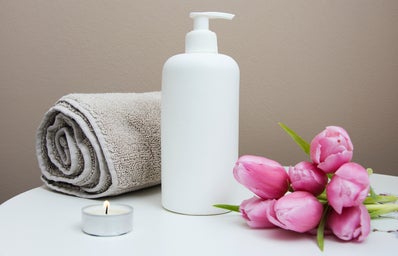Summertime: When our skin gets darker, drinks get colder, shorts get shorter, nights get longer, tan lines gets worse, and hair gets drier. We are well into the spring season and making our way towards summertime. During this time, I face challenges with my curly hair that are unique to the climate and the activities that the summer has to offer. The change in seasons tends to be tough on all of our hair and causes us to change up our hair care routines. Products and methods that were once working so well suddenly don’t anymore. It is important to always be taking good care of our hair, but during this dry season, it is crucial that we give me a little extra TLC.
Swimming Protection:
To protect hair from chlorine while swimming, it is crucial to prep your hair before doing so. Soak it in water before a swim, then apply conditioner and an oil of your choice. (I use coconut oil because it is cheaper than most oils and it works great for everything). When we saturate our hair with these products, it doesn’t soak up too much of the chlorine from the pool. Using a swim cap for additional protection is a plus. It is also critical to never leave chlorinated water in your hair, so rinsing off your hair and adding some conditioner for moisture before you can give your hair a thorough cleaning is important. Seawater should be rinsed out too because salt can cause intense dryness over time. Use an oil spray to protect hair from its dehydrating effects. When I run out, and I know I will be swimming in chlorinated or salt water, I always carry a spray bottle with water, conditioner, coconut oil, and castor oil for hydration after swimming.
Protective styling:
Protective styles are hairstyles that don’t require too much daily maintenance. They are a great way to stay away from the hassles of being natural in the summertime. These styles consist of fewer wash days, less frizz, little to no heat damage, and a gorgeous way to put it all together. Protective styles include but are not limited to twists, braids, updos, and wigs. A lot of times synthetic or human hair is added for even more versatility in color, thickness, length, and appearance in texture
Deep Conditioning:
Summer is not the time to slack off on your hair treatments. Deep conditioning hair treatments help prevent damage from the heat and styling tools as well as helping to replace moisture and vital proteins in the hair shaft. Deep conditioning is also necessary for those with damaged, brittle, or color-treated hair. When you deep condition your hair you help restore your hair’s luster and shine. Something that I love doing is applying a deep conditioner, wrapping my hair in a plastic cap or bag, and sitting in the sun for extra conditioning.
Eliminate or reduce your use of heat/styling tools:
Embrace your texture. Leave your hair natural this summer. Added heat to your hair is only going to contribute to the dryness in your hair. Irons, blow dryers, and hot combs are drying your hair at a time of year when you need moisture the most. And ironically, hot, humid weather forces you to use your hair tools even more often. Try to embrace your natural hair texture as often as possible in the hot summer months and give it a rest from thermal styling. If you are someone that can’t seem to put down your heating tools, then there are some ways to minimize the damage. Adjusting the heat on your styler to the lowest setting, using heat protectants on your hair, and reducing the number of times a month you use these styling tools are some ways of doing so.



